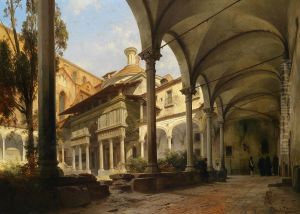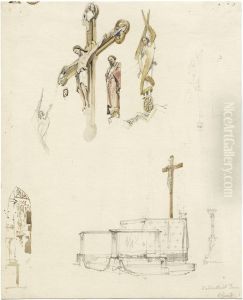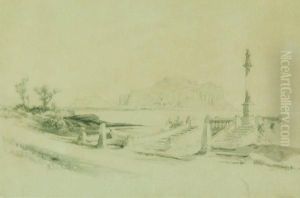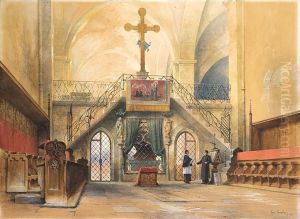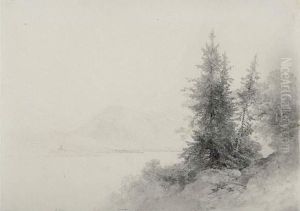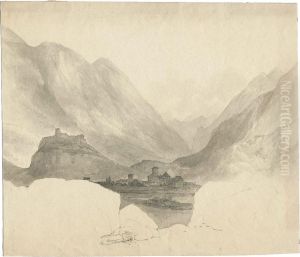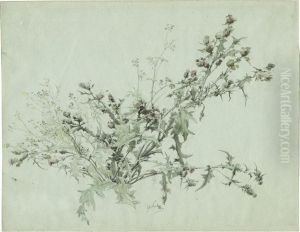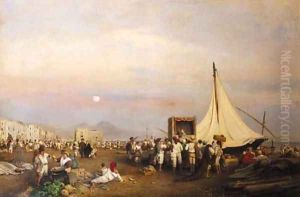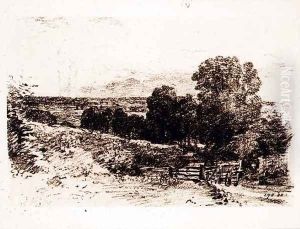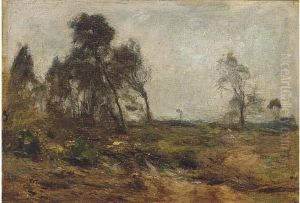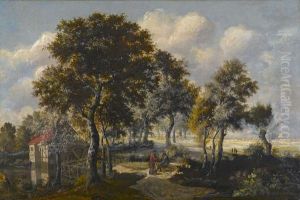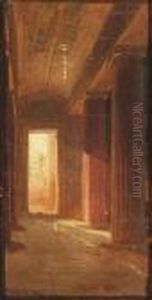





Sketch For A Painting In The Egyptian Courtyard At The Museum In Berlin. Oil/paper/cardboard, Rest Of A Signature, Verso Inscribed
-
About Reproduction
Discover the allure of art with our faithful reproduction of "Sketch For A Painting In The Egyptian Courtyard At The Museum In Berlin. Oil/paper/cardboard, Rest Of A Signature, Verso Inscribed", originally brought to life by the talented Carl Georg Anton Graeb. Unlike posters or prints, our hand-painted oil painting breathes an unique sense of depth and texture into your space. Every detail, every stroke, and every texture is meticulously recreated, paying the perfect homage to Carl Georg Anton Graeb and his artistic vision.
Owning this piece is more than just decoration - it's a statement of your refined taste in art. Let the vibrant colors and intricate details of this replica serve as a daily reminder of the beauty in our world. Elevate your decor and appreciate the richness of art with our replica of this masterpiece.
-
Painting Description
"Sketch For A Painting In The Egyptian Courtyard At The Museum In Berlin" is an evocative artwork created by the German painter Carl Georg Anton Graeb. This piece, executed in oil on paper mounted on cardboard, represents a preparatory study for a larger, more detailed painting. Graeb, known for his architectural and landscape paintings, often captured the grandeur and intricacies of historical and cultural sites, and this sketch is no exception.
The artwork depicts the Egyptian Courtyard at the Museum in Berlin, a space likely inspired by the collections and architectural elements of the Neues Museum, which houses an extensive array of Egyptian antiquities. The sketch provides a glimpse into Graeb's meticulous process, showcasing his ability to blend architectural precision with artistic expression. The use of oil on paper allows for a fluidity and immediacy in the rendering, capturing the essence of the courtyard's atmosphere and the interplay of light and shadow.
On the verso of the sketch, there is an inscription, though only a fragment of the signature remains, adding a layer of historical intrigue to the piece. This partial signature suggests that the sketch was a working document, a step in Graeb's artistic process rather than a finished product intended for display. The verso inscription may provide additional context or notes from the artist, offering insights into his thoughts and intentions during the creation of the work.
Carl Georg Anton Graeb (1816-1884) was a prominent figure in the 19th-century German art scene, renowned for his detailed and atmospheric depictions of architectural subjects. His works often reflect a deep appreciation for historical and cultural heritage, rendered with a keen eye for detail and composition. This sketch, while modest in scale, embodies Graeb's dedication to capturing the spirit and grandeur of his subjects, serving as a testament to his skill and artistic vision.
In summary, "Sketch For A Painting In The Egyptian Courtyard At The Museum In Berlin" is a significant example of Carl Georg Anton Graeb's preparatory work, offering valuable insights into his artistic process and his fascination with architectural and historical themes. The piece stands as a noteworthy contribution to the study of 19th-century German art and the depiction of cultural heritage in visual form.
-
Lead Time & Shipping
When you order this oil painting replica, it typically takes 2-3 weeks to paint. If the artwork is more complex, it might need a little more time to ensure the best quality. Once it's ready, we'll send you a photo for your approval. After you give the green light, we'll ship it to you for free.
-
Return & Refund
We believe in the quality of our hand-painted oil painting reproductions, and your satisfaction is our priority. If for any reason, you are not completely satisfied with your purchase, we offer a 45-day return policy. You can return your artwork within 45 days of receipt and receive a full refund. Please note that the artwork must be returned in the original packaging and in the same condition as it was received.






